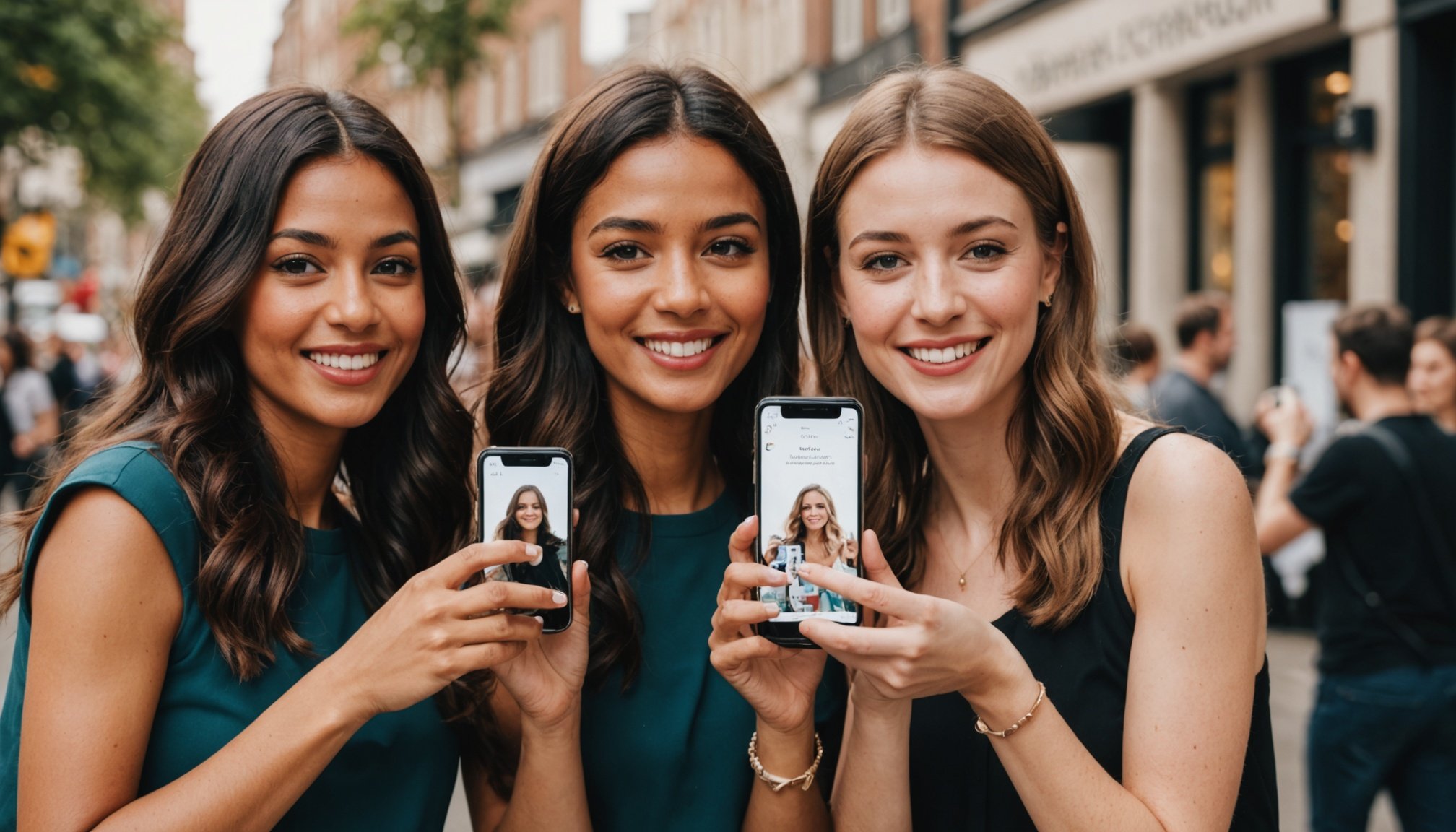Understanding User-Generated Content in the Beauty Industry
User-generated content (UGC) has emerged as a vital strategy in beauty marketing. Essentially, UGC includes any type of content, such as reviews, videos, or social media posts, created by individuals rather than brands. In the beauty sector, its significance cannot be underestimated. Beauty enthusiasts actively share their experiences, paving the way for authentic, relatable content that resonates with potential buyers.
Trends in UGC adoption reveal a robust shift among UK beauty brands towards embracing this form of engagement. Brands increasingly encourage consumers to post their product experiences online, often through campaigns or social media challenges. This not only amplifies the brand’s reach but also creates a community of engaged users eagerly interacting and sharing content.
This might interest you : Boosting customer delight: creative strategies for uk retailers to harness chatbots effectively
The impact of UGC on consumer trust is profound. When real-life customers advocate for a product, it naturally fosters credibility and mitigates scepticism. This, in turn, cultivates brand loyalty. Consumers feel connected, valued, and part of a larger community, which encourages repeat purchases and long-term relationships with the brand. By prioritising UGC, beauty brands can effectively engage consumers, build trust, and encourage brand loyalty.
Best Practices for Leveraging UGC
Incorporating User-Generated Content (UGC) into marketing strategies can greatly enhance brand visibility and customer involvement. Understanding UGC best practices is crucial to maximize its potential.
Creating a UGC-Friendly Environment
To foster an inviting UGC atmosphere, brands must offer clear guidelines and transparent objectives. Encourage customers to engage through interactive campaigns or contests, making them feel valued and part of the brand story.
Encouraging Authentic Contributions
Authenticity is key in UGC. Encourage customers to share their real experiences by incentivizing content creation. This could be through exclusive promotions or features on your platform. Authenticity builds trust, a cornerstone for any effective marketing strategy.
Curating and Showcasing UGC
Once collected, UGC should be curated to align with brand values. It’s important to maintain brand consistency while showcasing diversity in customer experiences. Utilize social media platforms effectively for UGC display, enhancing visibility, and reaching broader audiences. Strategically placed UGC can demonstrate product use cases, fostering credibility.
By implementing these strategies, brands can develop a thriving UGC ecosystem, which not only boosts engagement but also improves overall brand perception.
Step-by-Step Strategies for UK Beauty Brands
To effectively integrate UGC strategies into your marketing plans, begin with identifying your brand’s unique voice. Establish clear objectives around what each user-generated content aims to achieve. Utilize content that resonates with your target audience to build authenticity and trust.
Best Platforms for Gathering UGC in the Beauty Industry
Platforms play an important role in UGC implementation. Instagram and TikTok are powerful tools for beauty brands, offering visuals and staying on top of trends. Consumers seeking beauty inspiration often turn to these platforms. Encourage engagement through branded hashtags and challenge themes to motivate participation from your audience.
Timing and Frequency for UGC Campaigns
The timing of a UGC campaign is crucial. It requires consistent, but not overwhelming, content release. Aim for a balanced approach that keeps your audience engaged without feeling inundated. Quarterly campaigns are generally effective, allowing time for content analysis, strategic adjustments, and fresh campaign launches. Monitor engagement metrics regularly to refine your approach and maintain relevancy.
Guided by this implementation guide, beauty brands can navigate the complexities of UGC by establishing a strong, authentic connection with their audiences. Through strategic and timely beauty marketing tactics, brands can leverage consumer narratives powerfully.
Case Studies of Successful UGC Implementation
User-generated content (UGC) serves as a powerful tool for brands, especially within the UK beauty sector, showcasing the vibrant exchange between businesses and their consumers. Through engaging and strategic UGC implementations, brands have significantly enhanced their market presence and consumer engagement.
Brand A: Innovative Use of UGC
Brand A harnessed UGC by encouraging customers to share their beauty transformation stories on social media using specific hashtags. This not only increased consumer interaction but also allowed the brand to showcase genuine testimonials. The outcome was an authentic portrayal of product effectiveness, driving a noticeable increase in brand loyalty and new customer acquisition.
Brand B: Engaging Campaigns that Boosted Sales
Embracing UGC, Brand B launched a campaign where customers could recreate looks using the brand’s products. These entries were featured across their platforms, creating a sense of belonging within the community. This tactic not only enhanced engagement but resulted in a substantial surge in sales, demonstrating the impact of participatory consumer experiences.
Brand C: Achieving Brand Awareness through UGC
Brand C focused on boosting brand awareness by promoting user-generated tutorials that highlighted versatile product uses. This approach reached wider audiences, fostering greater brand visibility. By celebrating diverse applications envisioned by its users, Brand C effectively strengthened its community and expanded its reach.
Tools and Platforms for Managing UGC
In the digital landscape, UGC management tools have become pivotal for brands aiming to harness user-generated content effectively. From content creation to analysis, these platforms cater to different facets of content collection and curation.
Popular UGC Management Tools
Among the most recognized tools are Buzzsumo and Yotpo. These platforms streamline the process of identifying and aggregating content relevant to your audience. Buzzsumo is renowned for its ability to discover trends and analyse engagement metrics, making it a versatile choice for marketers. Yotpo focuses on integrating customer reviews and photos into marketing campaigns, enhancing brand authenticity.
Benefits for the Beauty Industry
For beauty brands, using UGC platforms can significantly enhance credibility and audience engagement. The relatable nature of user content resonates well with consumers seeking authentic experiences. Platforms like Olapic not only showcase user photos but provide analytics to measure campaign success, ensuring that brand objectives align with audience preferences.
Integration with Marketing Strategies
Effectively integrating UGC tools with existing strategies requires a seamless approach. By coordinating efforts across multiple channels, brands can ensure consistent messaging and maximise outreach. The adaptability of these tools allows for targeted customer interactions, improving overall marketing performance. Embracing marketing technology embedded within UGC tools empowers brands to remain competitive and innovative.
Legal Considerations in UGC Usage
When engaging with user-generated content (UGC) in marketing, it is essential to address any potential legal issues. At the forefront is understanding copyright laws as they relate to UGC. These laws protect the creator’s rights and dictate how their work can be used by others. Compliance in marketing demands that any use of third-party content be lawful and respectful of these rights.
Best practices for handling UGC legal issues involve obtaining explicit consent from content creators. Without consent, using such content in marketing campaigns could lead to legal challenges. This means reaching out to creators and clearly explaining how their content will be used. To promote trust and avoid misunderstandings, communication must be clear and respectful.
Another critical aspect is the importance of transparent usage policies. These policies should be laid out upfront, detailing exactly how UGC will be used in campaigns. This transparency helps in building positive relationships with content creators and ensures both parties are aligned regarding the expectations. It’s not just about being compliant; it’s about fostering trust and mutual respect in content collaboration.
Engaging Customers to Generate UGC
To foster a thriving community around your brand, focus on a few key strategies. Engaging with customers is vital to creating robust connections. Community building isn’t just about collecting followers; it’s about establishing meaningful relationships that benefit both sides. This can be achieved through active participation and consistent interaction with your audience.
Building a Community Around Your Brand
A brand-centric community forms the backbone for successful engagement. Encourage participation by creating exclusive spaces for interaction, such as forums or social media groups. Here, customers can share their experiences, exchange ideas, and connect with each other. Such platforms facilitate open feedback loops, providing invaluable insights into customer experiences and preferences.
Utilizing Feedback and Reviews
Incorporate customer reviews as a fundamental part of your feedback loops strategy. These reviews not only offer suggestions for improvement but also serve as social proof for potential buyers. By responding to customer feedback positively, you reinforce trust and demonstrate your commitment to improvement. This responsiveness often inspires customers to contribute more, enhancing user-generated content (UGC).
Running UGC Contests and Campaigns
Design engaging contests and campaigns to motivate customer engagement. By offering incentives, like discounts or recognition, brands can effectively encourage UGC participation. These activities not only boost content creation but also amplify brand visibility through users’ creative expressions.










